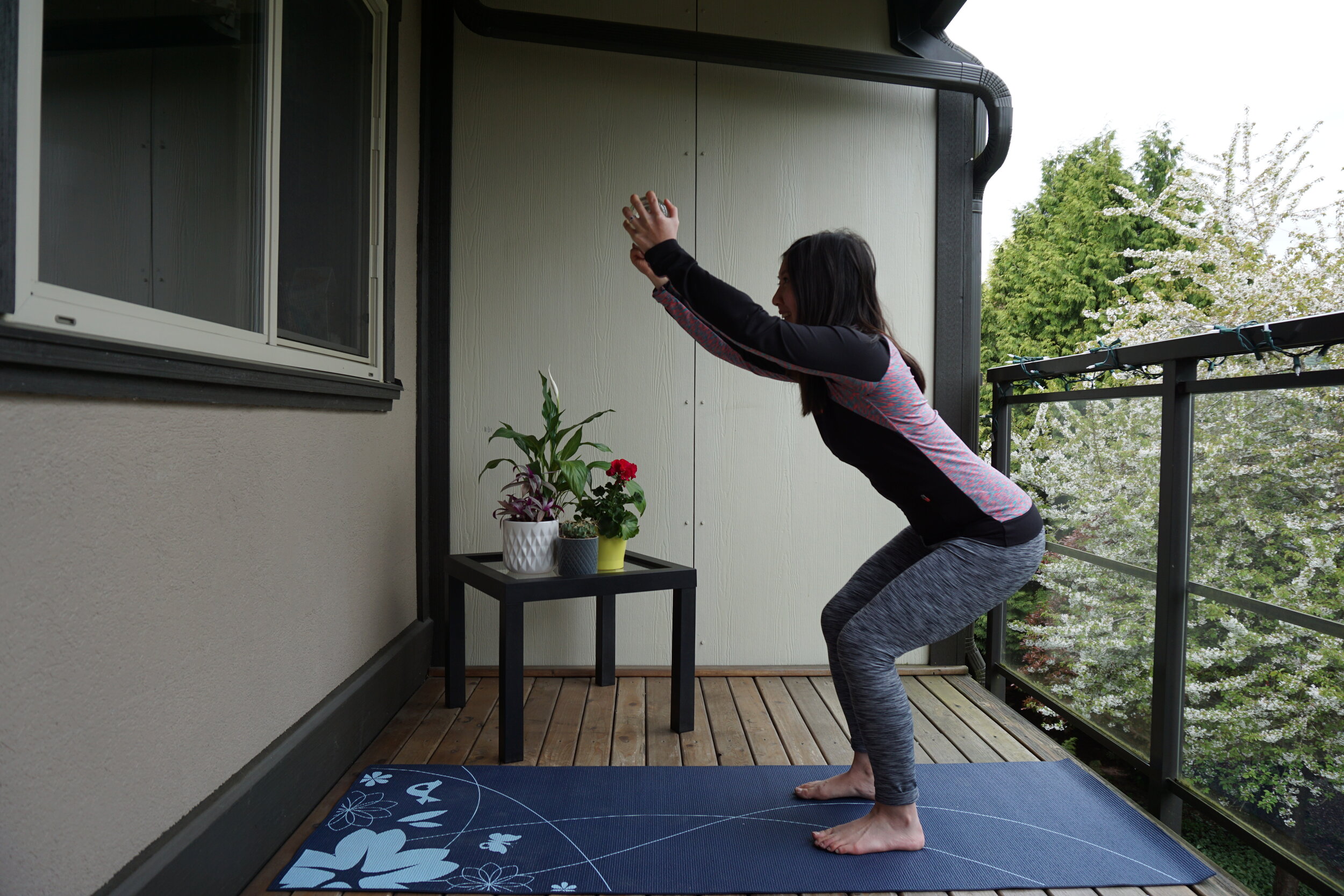So I know we’re all in the same boat here. We’ve been staying home for over a month, which has probably included a lot of vegging out, binge-watching old movies, and baking more cookies than we could ever eat. We think about working out but gyms are closed, and it’s just so hard to get motivated for a home workout. Then you check your phone and see Nicole’s blog telling you it’s time to start strength training. What to do??
Don’t worry, I am here to help! All you need is one wine bottle (and don’t tell me you haven’t consumed at least ONE bottle of wine!). Fun fact: an average empty wine bottle weighs about 2.5lbs – personally my preferred dumbbell! Got your wine bottle? Let’s get started!
Here are 5 exercises that YOU can do AT HOME with just one empty WINE BOTTLE! This is a full body workout and has both easier and harder variations so no matter where you’re at in your fitness journey, this workout is for you!
Exercise #1: Triceps Curls in a Bridge
Lie on your back with your knees bent. Lift your hips up into a bridge position. Bring your arms up so that they are directly over your shoulders with the wine bottle held horizontally between both hands. Bend your elbows so that the wine bottle goes towards your head – but don’t let it hit your head!
Easier variation: Take out the bridge and just do the triceps curls!
Harder variation: Make it a single leg bridge!
Exercise #2: Biceps Curls in a Wall Sit
Position yourself with your back to the wall like you are sitting in a chair, knees bent to around 90 degrees. Grab the wine bottle with both hands and bend and straighten your arms while keeping the elbows tucked at your side.
Easier variation: Take out the wall sit and just do the biceps curls! Or drop that wine bottle! (gently)
Harder variation: Extend out one leg at a time!
Exercise #3: Side Plank Star
Get into a side plank, on your forearms or on your hands, you pick…just make sure you’re engaging all of those lovely shoulder muscles so your shoulder is not collapsing down! Grab that wine bottle and hold it up in the air.
Easier variation: Plank on your knees, drop that wine bottle and put your hand on your waist!
Harder variation: Wrap the wine bottle under your body and back up into the air (just like the picture on the right)!
Exercise #4: Wine Weighted Lunges
Grab that wine bottle with both hands and lunge one foot forward, dropping the back leg down so that your knee is bent to around 90 degrees. Step back and do the other side.
Easier variation: Drop the wine bottle. You can even use your free hands to now hold on to a chair for support!
Harder variation: Add a rotation with the wine bottle towards the side of the lunging foot with each lunge. Pulse it out at the bottom of the lunge. Do some walking lunges. So many options!
Exercise #5: Wine Weighted Side Stepping Squats
Grab the wine bottle and get into your best squat – you got it, able to see and wiggle your toes! Now step to the side while staying in your squat. Don’t forget to change directions!
Easier variation: Just squat, forget about the side steps. Do mini squats if you don’t want to get down low.
Harder variation: Add in some overhead presses with the wine bottle as you side step!
Want to make this a full blown, 30-minute total body workout? Just do each of the above exercises for 1 minute and take a 1 minute break after exercise #5…Then repeat 5 times!
For those of you looking for a bonus challenge…Do this workout with a FULL wine bottle, and then pour some out to celebrate when your 30 minutes is over.
As always, to book an (online!) appointment, give us a call at (778) 630-8800, email us or visit us at ladnervillagephysio.com.
I don’t know what you’re waiting for – happy workout!












